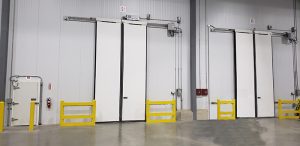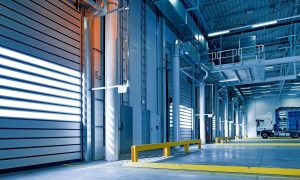How Much Energy Does Cold Storage Use?
Cold storage facilities play a crucial role in preserving perishable goods, from food to pharmaceuticals, at low temperatures to extend their shelf life. However, this preservation comes at a cost, not just in terms of infrastructure and maintenance but also in terms of energy consumption. In this article, we’ll delve into the energy usage of cold storage facilities, exploring the factors that influence it and discussing strategies for making these operations more energy-efficient.
Understanding Cold Storage Facilities
Before we dive into the energy consumption of cold storage, it’s important to understand the basics of these facilities. Cold storage is a controlled environment where temperature and humidity are maintained at specific levels to preserve items. These facilities are widely used for various purposes, such as storing food products, pharmaceuticals, and chemicals. The key components of a cold storage facility include:
1. Refrigeration Systems: The heart of any cold storage facility is its refrigeration system. These systems are responsible for cooling the space and maintaining the desired temperature. Refrigeration systems are powered by compressors that use electricity to compress refrigerant gases, which absorb and release heat.
2. Insulation: Insulation is crucial in preventing heat exchange between the interior and exterior of the facility. Proper insulation helps maintain the desired temperature, reducing the workload on the refrigeration system.
3. Ventilation: Ventilation systems are essential for maintaining consistent humidity levels within the cold storage facility. Controlling humidity is critical for preserving certain products, such as fresh produce.
4. Lighting: Adequate lighting is essential for operations within the facility, but it also contributes to energy consumption.

Factors Influencing Energy Consumption
Now that we have an understanding of the components of cold storage facilities, let’s explore the factors that influence their energy consumption:
1. Temperature Requirements: The desired storage temperature significantly impacts energy usage. Lower temperatures require more energy to maintain, and different products have varying temperature requirements. For example, storing ice cream at -20°C consumes more energy than storing fruits at 4°C.
2. Facility Size: The size of the cold storage facility is a significant factor. Larger facilities generally consume more energy due to the increased space that needs to be cooled and maintained.
3. Insulation Quality: The quality and effectiveness of insulation materials play a crucial role in energy efficiency. Well-insulated facilities require less energy to maintain the desired temperature.
4. Equipment Efficiency: The energy efficiency of the refrigeration equipment, including compressors and evaporators, has a direct impact on energy consumption. Upgrading to energy-efficient equipment can lead to substantial energy savings.
5. Frequency of Door Openings: The frequency with which doors are opened and closed affects energy usage. Frequent openings allow warm air to enter the facility, increasing the workload on the refrigeration system.
6. Lighting Efficiency: Energy-efficient lighting systems, such as LED lights, can reduce electricity consumption within the facility.
Measuring Energy Consumption
To determine how much energy a cold storage facility uses, several key metrics are considered:
1. Kilowatt-Hour (kWh): This is the standard unit of measurement for electricity consumption. It represents the amount of energy consumed over time. Cold storage facilities typically have electricity meters that track their kWh usage.
2. Energy Intensity: Energy intensity measures the energy used per unit of storage capacity. It is often expressed as kWh per cubic meter or square foot of storage space.
3. Specific Energy Consumption (SEC): SEC is a metric used to assess the energy efficiency of a facility. It calculates the energy used to store a specific quantity of product. Lower SEC values indicate higher efficiency.
Strategies for Energy Efficiency
Reducing energy consumption in cold storage facilities is not only beneficial for the environment but also for the bottom line. Here are some strategies for making these facilities more energy-efficient:
1. Regular Maintenance: Implement a comprehensive maintenance schedule for refrigeration equipment to ensure it operates at peak efficiency.
2. Upgrade Equipment: Consider replacing old and inefficient refrigeration equipment with newer, energy-efficient models.
3. Improve Insulation: Invest in high-quality insulation materials and seal any gaps or leaks in the facility’s structure.
4. Optimize Temperature: Adjust temperature settings to the minimum required for product preservation. Implement temperature monitoring and control systems to prevent unnecessary cooling.
5. Implement LED Lighting: Replace traditional lighting with energy-efficient LED fixtures.

6. Door Management: Implement strict door management protocols to minimize the frequency of door openings and reduce warm air infiltration.
7. Renewable Energy: Explore the possibility of using renewable energy sources, such as solar panels, to offset electricity consumption.
Conclusion
Cold storage facilities are vital for preserving a wide range of products, but their energy consumption should not be overlooked. Understanding the factors that influence energy usage and implementing energy-efficient practices and technologies can lead to significant cost savings and reduce the environmental impact of these operations. As the demand for cold storage continues to grow, it becomes increasingly important to find innovative ways to balance preservation needs with energy conservation goals. For coolrooms that are energy efficient see here.

Recent Comments